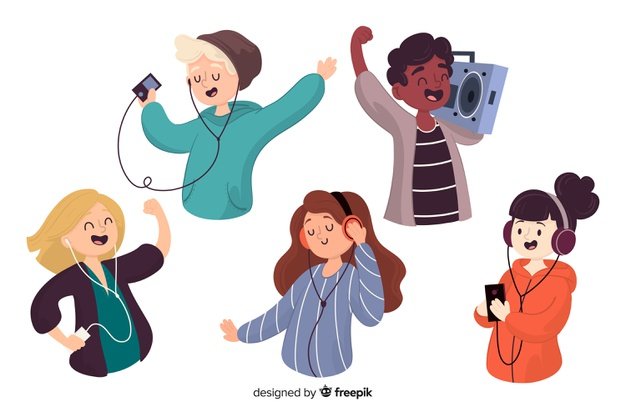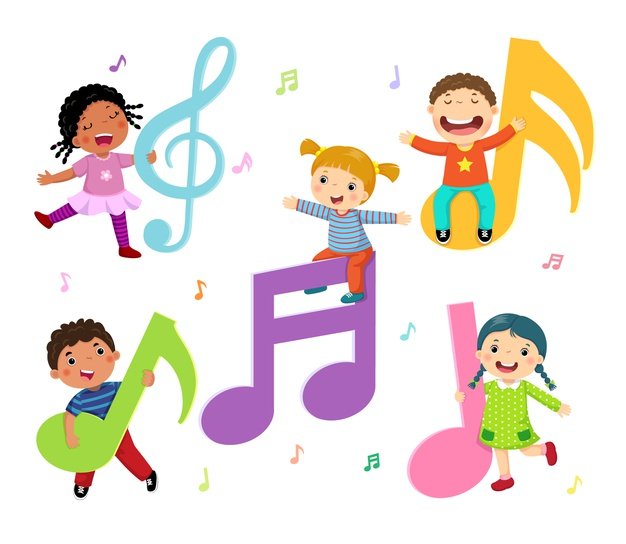[ESP | ENG] La Formación AUDITIVA en las Distintas Etapas Del Aprendizaje Musical 🎵 | AUDITORY TRAINING IN THE DIFFERENT STAGES OF MUSICAL LEARNING 🎧
Feliz tarde para toda la comunidad de Hive, además de docente de bachillerato, también soy docente de música en el Sistema de Orquestas de Venezuela, en la catedra de Lenguaje Musical y de Violín. Es por eso que en base a mi experiencia y a la investigación realizada, en esta ocasión les daré un breve abre boca sobre este tema tan interesante: La Formación AUDITIVA en las Distintas Etapas Del Aprendizaje Musical.
Happy afternoon to all the Hive community, besides being a high school teacher, I am also a music teacher in the Sistema de Orquestas de Venezuela, in the Musical Language and Violin classes. That is why based on my experience and research, this time I will give you a brief overview of this interesting topic: AUDITIVE Formation in the Different Stages of Musical Learning.

La formación auditiva podrá tomar distintas formas según a quien se dirija, en función de la edad y del ámbito en el que se realiza el
aprendizaje. No podremos exigir los mismos resultados en cuanto a dominio de la percepción auditiva a los estudiantes de Primaria, que tienen una hora a la semana de clase, en la que además debemos cantar, tocar instrumentos, aprender rudimentos de grafía musical, escuchar música y, en general, sensibilizar al estudiante hacia el fenómeno musical, que a los estudiantes de una escuela de música, que tienen un enfoque profesional de sus estudios musicales.
A los primeros les enseñaremos, sobre todo, a percibir el mundo que les rodea, a disfrutar de la música y a percibir y reconocer intuitivamente algunos elementos musicales: timbres, instrumentos, voces, formas, estilos, canciones, etc. Con los segundos deberemos profundizar en la adquisición de un buen oído musical que les sirva de base para la práctica musical como cantantes, instrumentistas o profesores.
Auditory training may take different forms depending on the target audience, the age of the learner and the environment in which the learning takes place.
learning. We will not be able to demand the same results in terms of mastery of auditory perception from primary school students, who have one hour a week of class, in which we must also sing, play instruments, learn the rudiments of musical spelling, listen to music and, in general, sensitize the student to the musical phenomenon, as from students in a music school, who have a professional approach to their musical studies.
The former will be taught, above all, to perceive the world around them, to enjoy music and to intuitively perceive and recognize certain musical elements: timbres, instruments, voices, forms, styles, songs, etc. With the second ones we will have to deepen in the acquisition of a good musical ear that will serve them as a base for the musical practice as singers, instrumentalists or teachers.

Con los estudiantes de la Facultad de Formación del Profesorado, de la especialidad de Maestro en Educación Musical, seremos mucho más
estrictos, pues de su oído depende la calidad de su afinación y no hemos de olvidar que constituirán los modelos en los que se basarán los estudiantes de Primaria para aprender a cantar. Han de tener un oído bien desarrollado, capaz de detectar y corregir las impresiones de sus estudiantes a la hora de afinar.
Así como también un buen oído relativo, que les permita cantar sin dificultad en cualquier tonalidad, en función de las posibilidades y edad de sus estudiantes; paralelamente, han de desarrollar, en la medida de lo posible, un cierto oído absoluto que les permita orientarse, aunque sea de forma aproximada, en las alturas de los sonidos, especialmente necesario para dar el tono e iniciar las canciones a sus estudiantes sin ayuda de un instrumento.
We will be much stricter with the students of the Faculty of Teacher Training, specializing in Music Education, since their ear depends on the quality of their intonation and we must not forget that they will be the models on which the Primary School students will base their learning to sing.
We must not forget that they will be the models on which the primary school students will be based to learn to sing. They must have a well-developed ear, capable of detecting and correcting their students' impressions when tuning.
As well as a good relative ear, which allows them to sing without difficulty in any key, depending on the possibilities and age of their students; in parallel, they must develop, as far as possible, a certain absolute ear that allows them to orient themselves, even approximately, in the heights of the sounds, especially necessary to give the tone and start the songs to their students without the help of an instrument.
Conclusión | Conclusion

El oído musical es, pues, una facultad en parte innata y en parte adquirida que juega un papel decisivo en la formación de la persona, tanto desde el punto de vista humano como musical.
Es necesario conocer las características fisiológicas y psicológicas de su funcionamiento para poder incidir de forma eficaz en la formación de un oído sensible y desarrollado. Asimismo es imprescindible plantear una metodología sistemática para su entrenamiento, dado que la percepción auditiva de las alturas, la más importante en el aspecto musical, presenta dificultades en muchos casos, especialmente en niños o adultos que no han tenido un entorno musical favorable o que han tenido malos modelos (madres o maestras poco afinadas).
En principio, las habilidades de discriminación auditiva son inherentes a todos los seres humanos desde muy temprana edad, pero requieren de refuerzo y estímulo para que prosperen. El niño debe tener un ambiente propicio para desarrollar sus capacidades musicales, igual que sucede con el aprendizaje del lenguaje.
En cualquier caso, siempre se puede mejorar el oído, especialmente en el caso de los niños, más dúctiles y recuperables. Los adultos
acostumbran a presentar más problemas, porque además suelen estar mucho más bloqueados e inseguros: tienen el convencimiento (en parte cierto) de que el aprendizaje musical deberían haberlo hecho de pequeños.Debemos conocer a fondo las características de los estudiantes quienes debemos educar intuitivamente: su historial musical, entorno experiencias, dificultades, etc., para poder diseñar una metodología apropiada.
El conocimiento y discriminación del mundo sonoro estimula, como se ha visto, la capacidad intelectual y es, sobre todo, una forma de conocer el mundo que nos rodea y sentirnos más seguros en él.
The musical ear is therefore a partly innate and partly acquired faculty that plays a decisive role in the formation of the person, both from the human and musical point of view.
It is necessary to know the physiological and psychological characteristics of its functioning in order to be able to effectively influence the formation of a sensitive and developed ear. It is also essential to propose a systematic methodology for its training, since the auditory perception of heights, the most important in the musical aspect, presents difficulties in many cases, especially in children or adults who have not had a favorable musical environment or who have had bad models (mothers or teachers who are not very in tune).
In principle, auditory discrimination skills are inherent to all human beings from a very early age, but they require reinforcement and encouragement to flourish. The child must have an environment conducive to developing his or her musical abilities, just as with language learning.
In any case, hearing can always be improved, especially in the case of children, who are more ductile and recoverable. Adults
tend to have more problems, because they tend to be much more blocked and insecure: they are convinced (partly true) that they should have learned music when they were young.We must know in depth the characteristics of the students whom we must educate intuitively: their musical background, environment, experiences, difficulties, etc., in order to design an appropriate methodology.
The knowledge and discrimination of the world of sound stimulates, as we have seen, the intellectual capacity and is, above all, a way of knowing the world around us and feeling more secure in it.
https://twitter.com/mariakekin/status/1381758961561563136
@tipu curate
Posted using Dapplr
Upvoted 👌 (Mana: 0/48) Liquid rewards.
Congratulations @mariakekin! You have completed the following achievement on the Hive blockchain and have been rewarded with new badge(s) :
Your next payout target is 50 HP.
The unit is Hive Power equivalent because your rewards can be split into HP and HBD
You can view your badges on your board and compare yourself to others in the Ranking
If you no longer want to receive notifications, reply to this comment with the word
STOPSupport the HiveBuzz project. Vote for our proposal!
Hola María
El texto que presentas es muy interesante, pero lamentablemente se trata de un transcripción (con algunos ligeros cambios) de un documento publicado en las redes
http://diposit.ub.edu/dspace/bitstream/2445/11525/1/EL%20OIDO%20MUSICAL.pdf
Esta es una práctica desaconsejada en Hive. Puedes colocar algunas citas, pero además debes indicarlo claramente, para que no se preste a pensar que estás haciendo pasar el texto por creación propia, que es lo que se denomina plagio.
Mi recomendación, por el bien de tu cuenta y reputación, es que elabores tus propios contenidos a partir de temas que domines.
¡Éxitos!